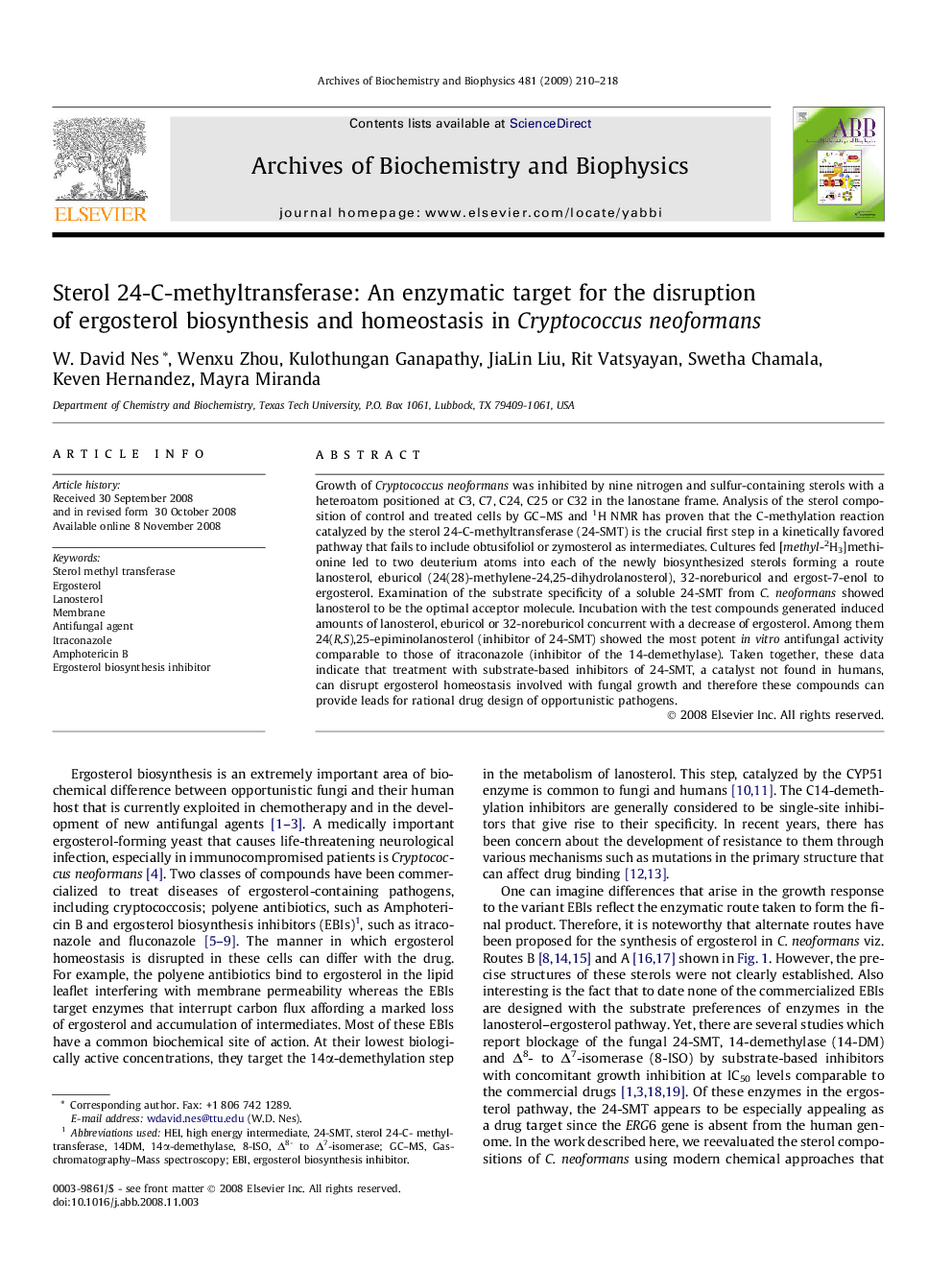| Article ID | Journal | Published Year | Pages | File Type |
|---|---|---|---|---|
| 1926391 | Archives of Biochemistry and Biophysics | 2009 | 9 Pages |
Growth of Cryptococcus neoformans was inhibited by nine nitrogen and sulfur-containing sterols with a heteroatom positioned at C3, C7, C24, C25 or C32 in the lanostane frame. Analysis of the sterol composition of control and treated cells by GC–MS and 1H NMR has proven that the C-methylation reaction catalyzed by the sterol 24-C-methyltransferase (24-SMT) is the crucial first step in a kinetically favored pathway that fails to include obtusifoliol or zymosterol as intermediates. Cultures fed [methyl-2H3]methionine led to two deuterium atoms into each of the newly biosynthesized sterols forming a route lanosterol, eburicol (24(28)-methylene-24,25-dihydrolanosterol), 32-noreburicol and ergost-7-enol to ergosterol. Examination of the substrate specificity of a soluble 24-SMT from C. neoformans showed lanosterol to be the optimal acceptor molecule. Incubation with the test compounds generated induced amounts of lanosterol, eburicol or 32-noreburicol concurrent with a decrease of ergosterol. Among them 24(R,S),25-epiminolanosterol (inhibitor of 24-SMT) showed the most potent in vitro antifungal activity comparable to those of itraconazole (inhibitor of the 14-demethylase). Taken together, these data indicate that treatment with substrate-based inhibitors of 24-SMT, a catalyst not found in humans, can disrupt ergosterol homeostasis involved with fungal growth and therefore these compounds can provide leads for rational drug design of opportunistic pathogens.
